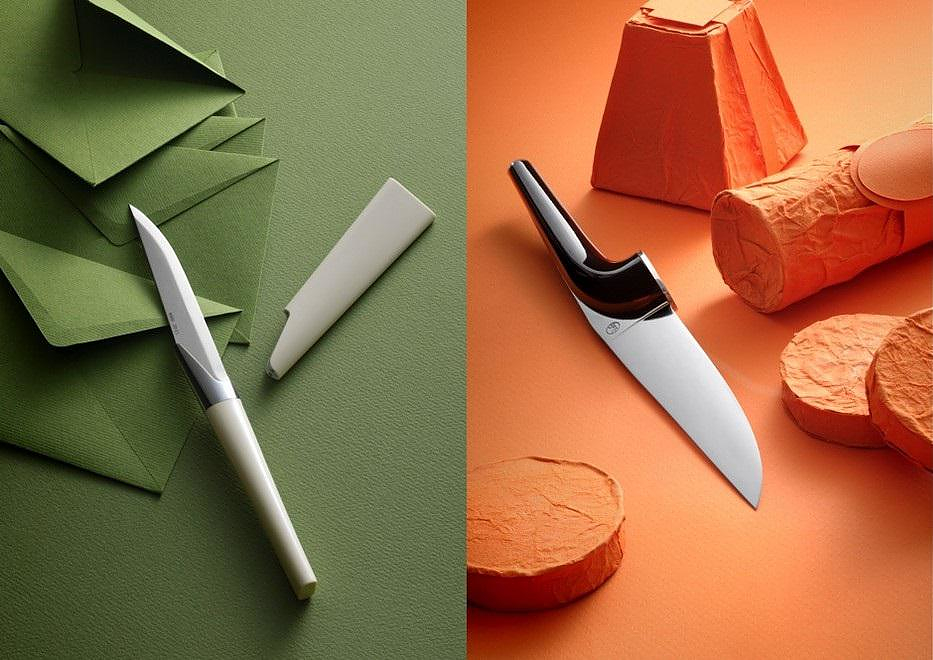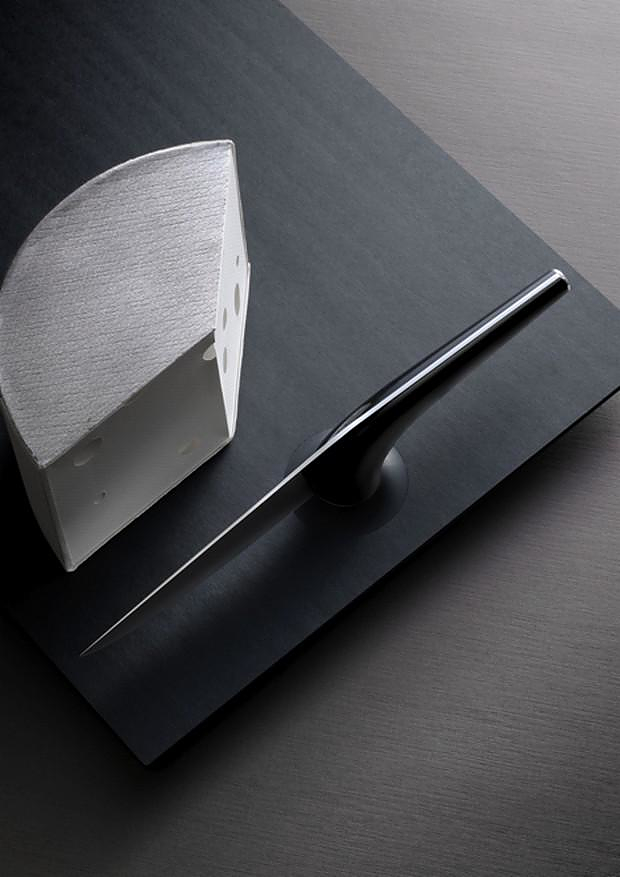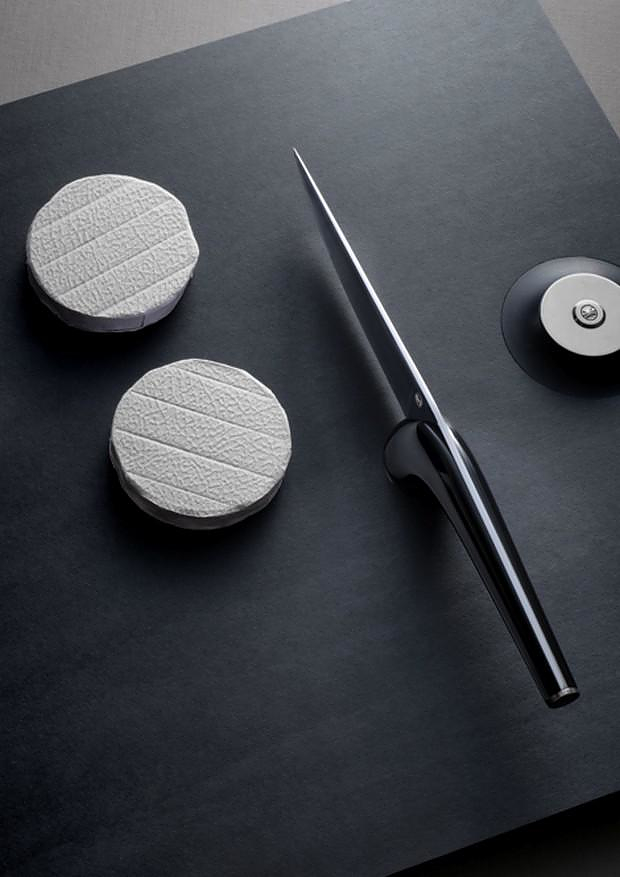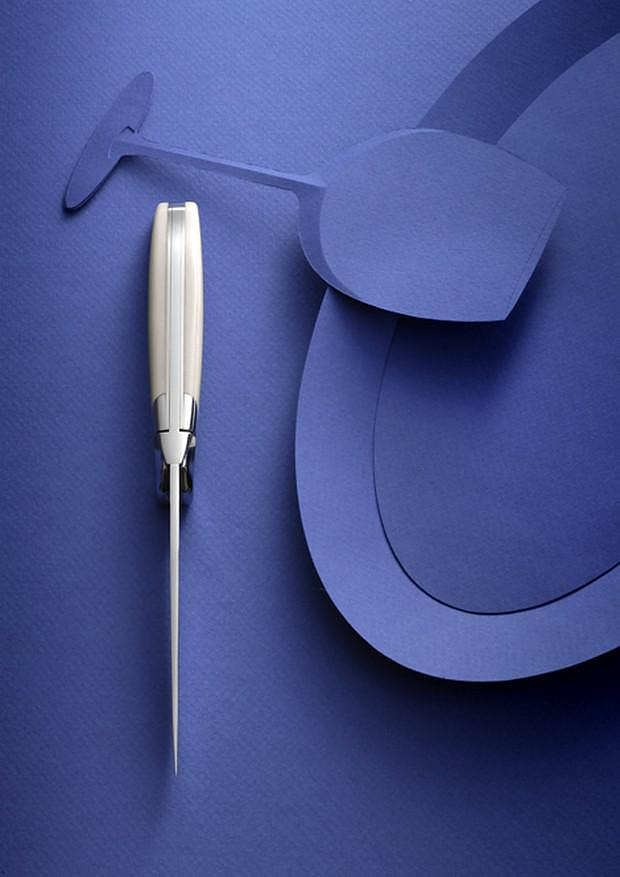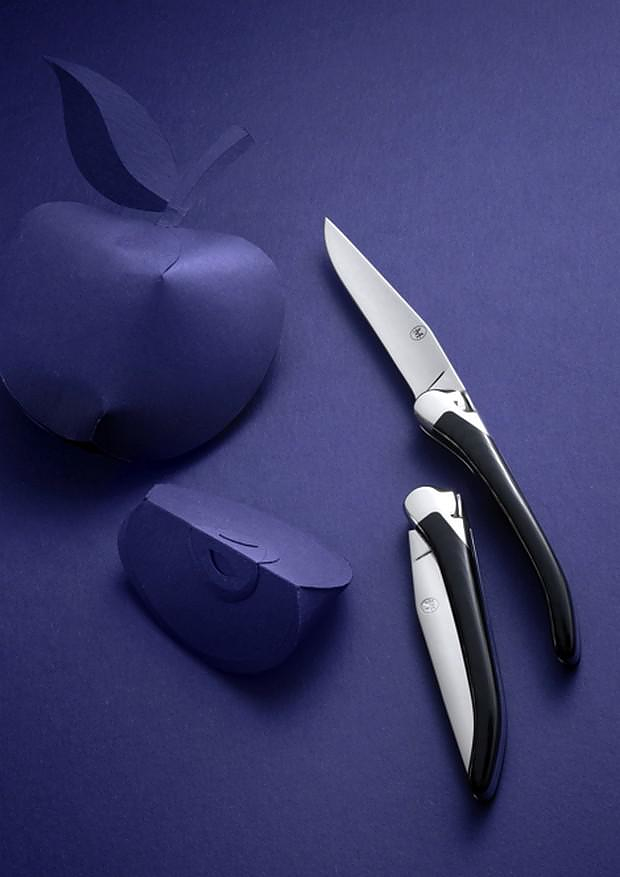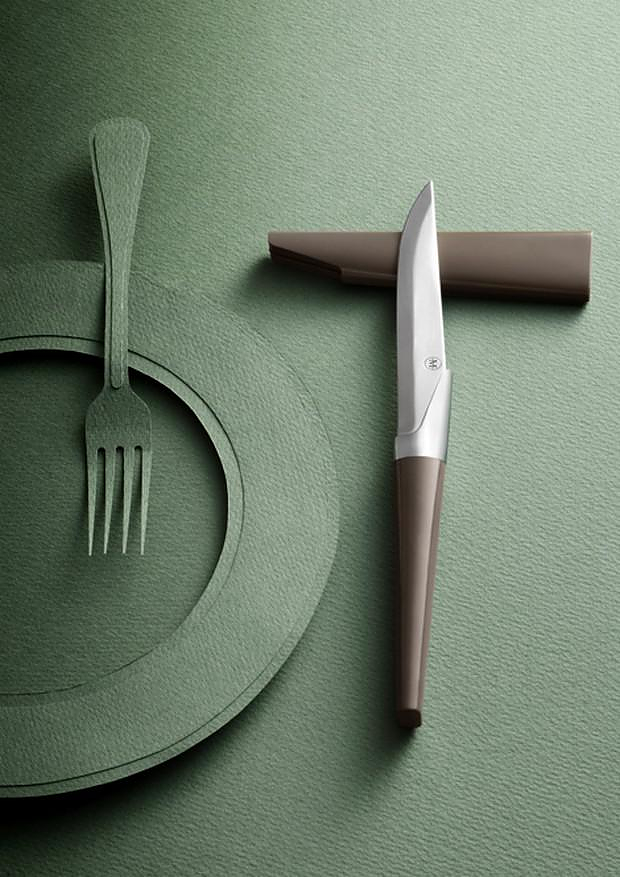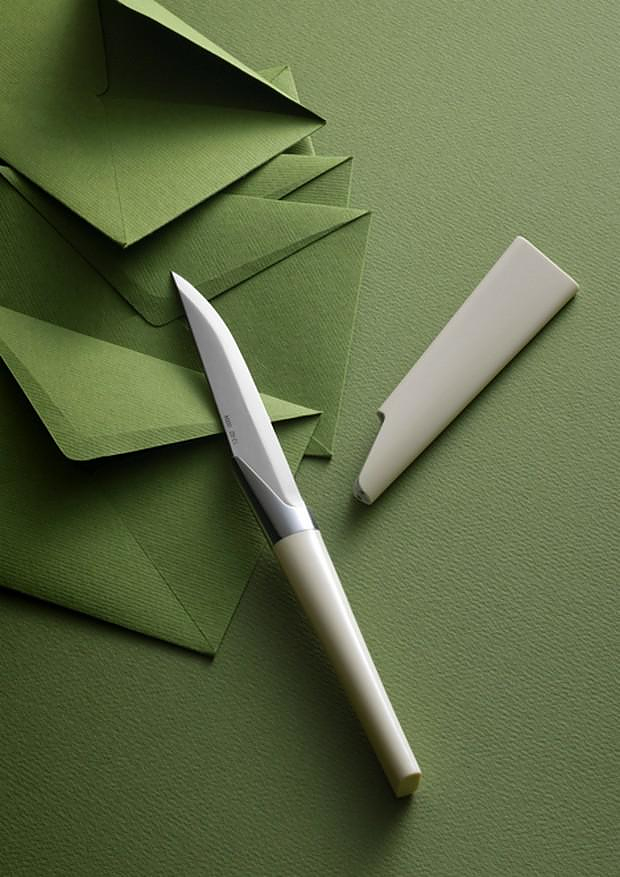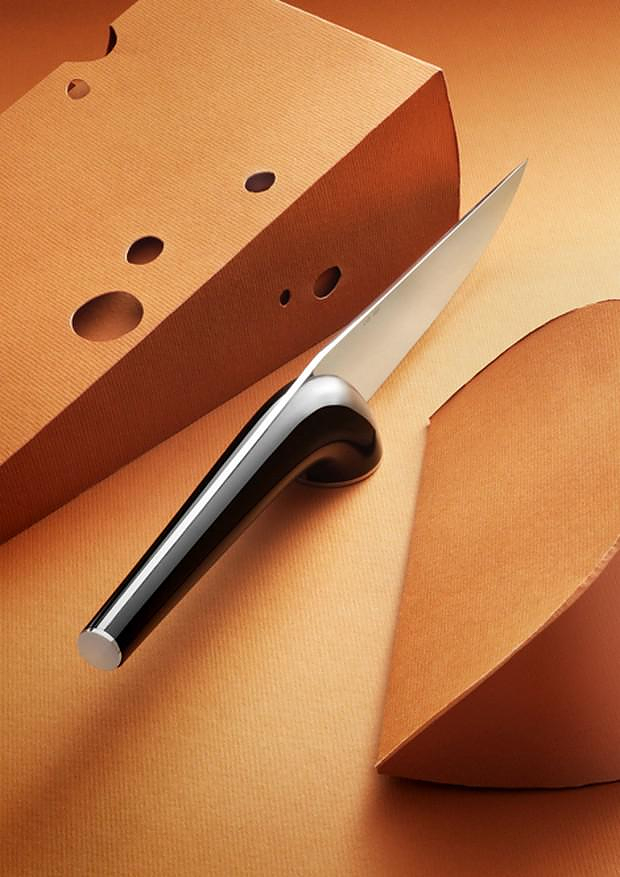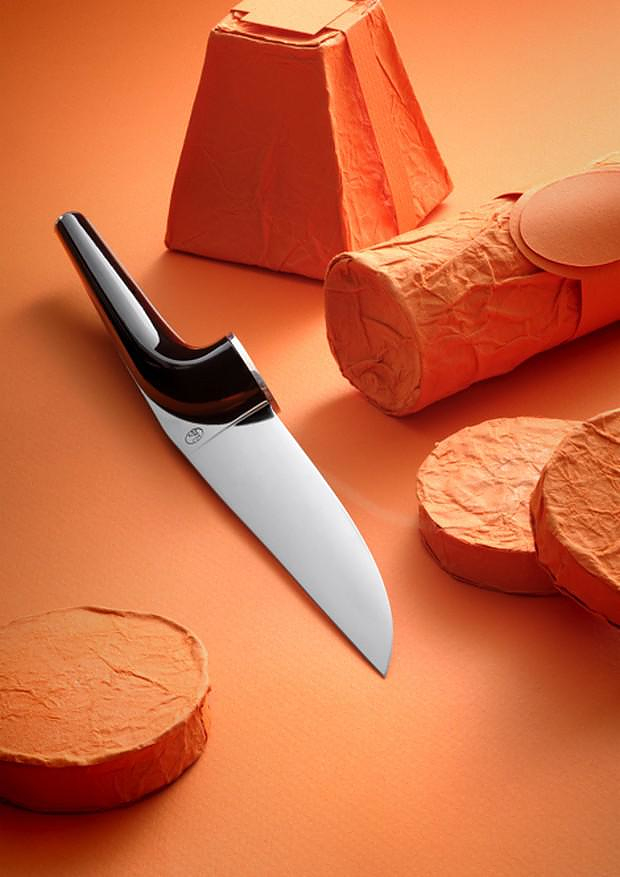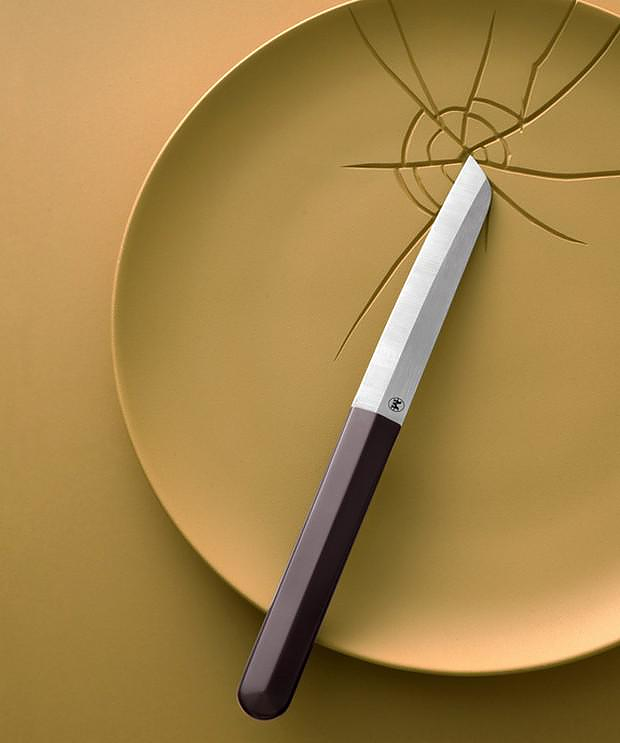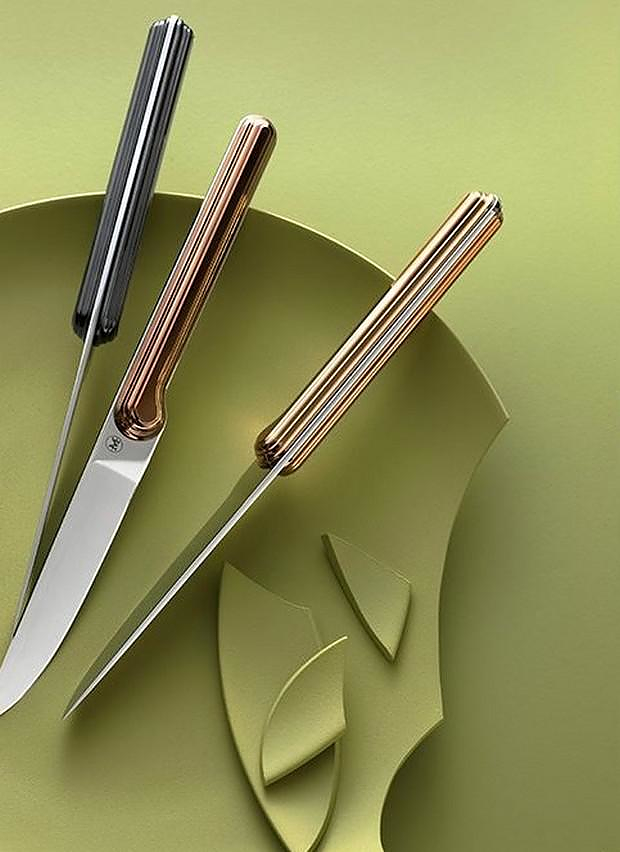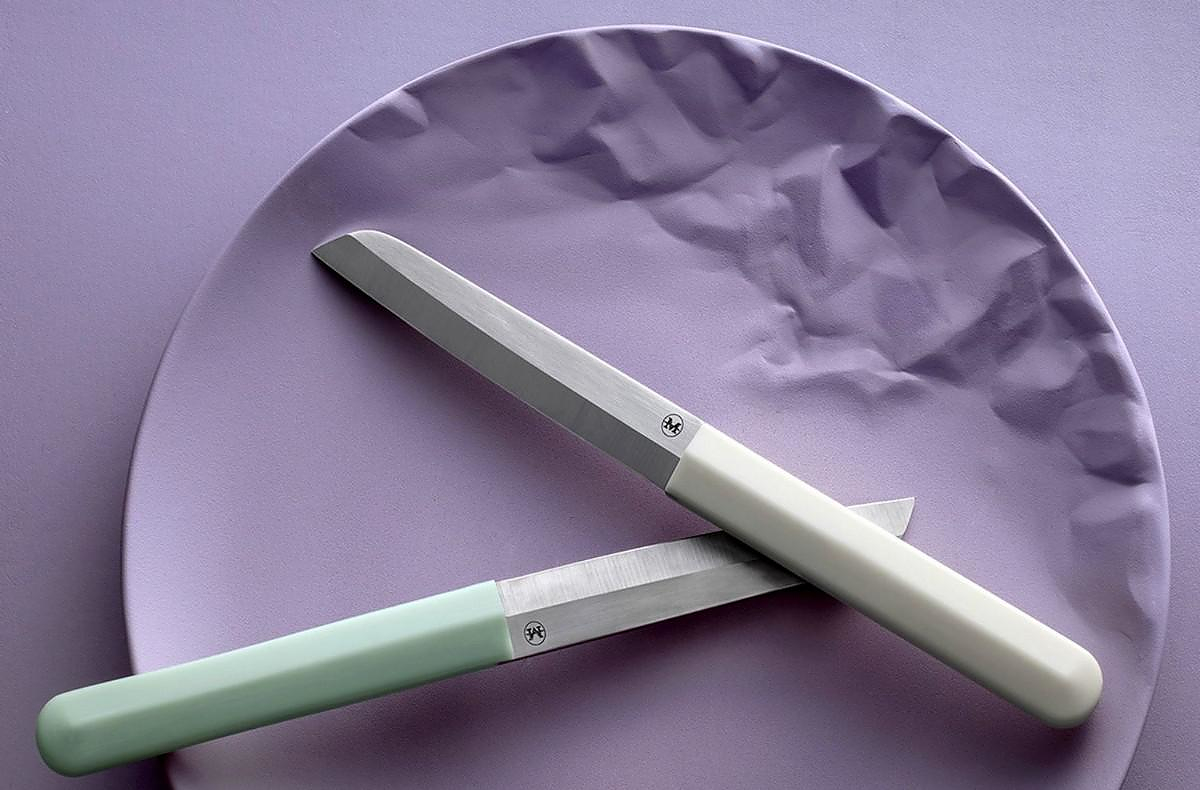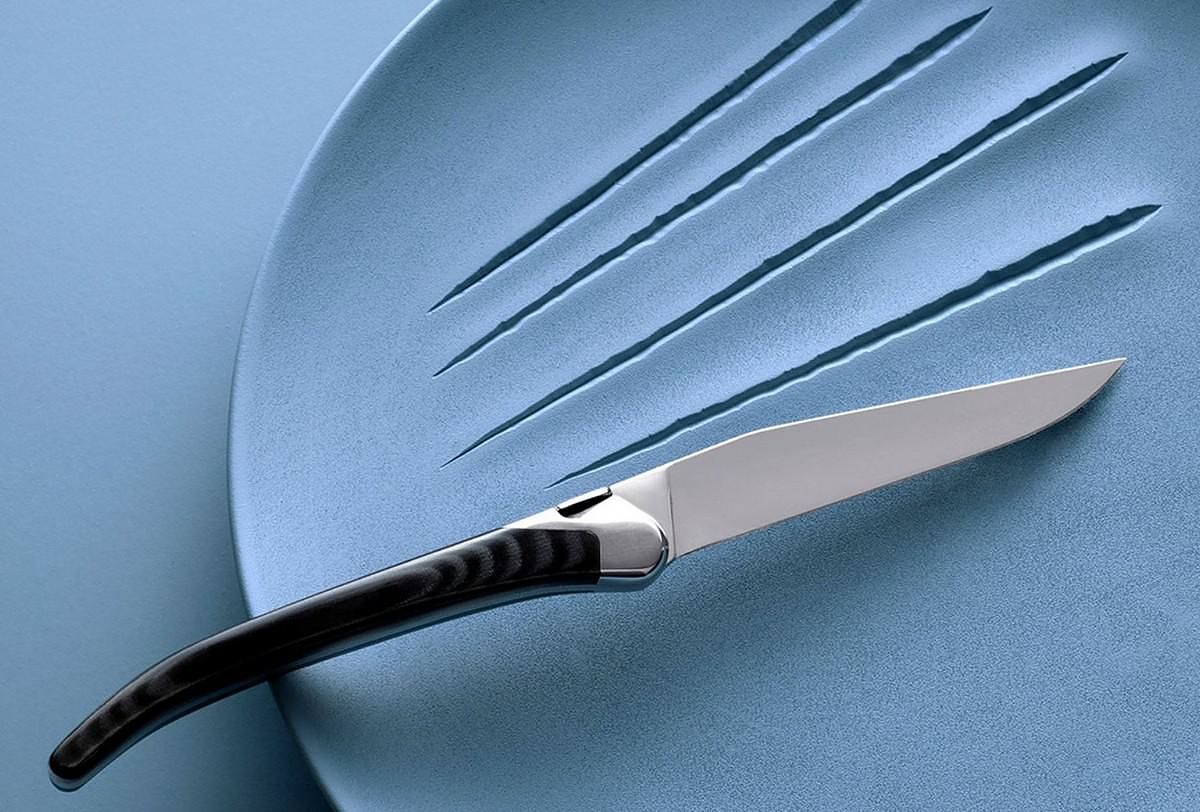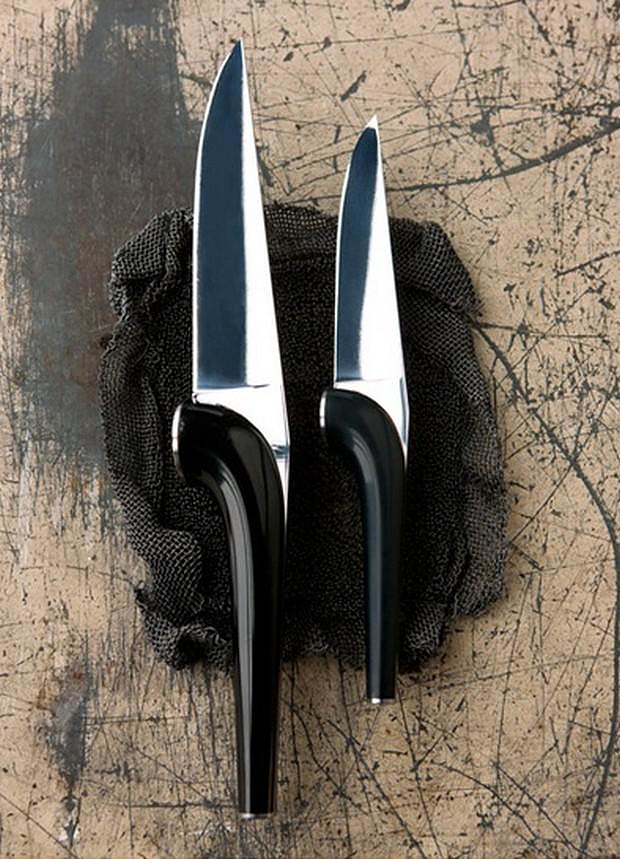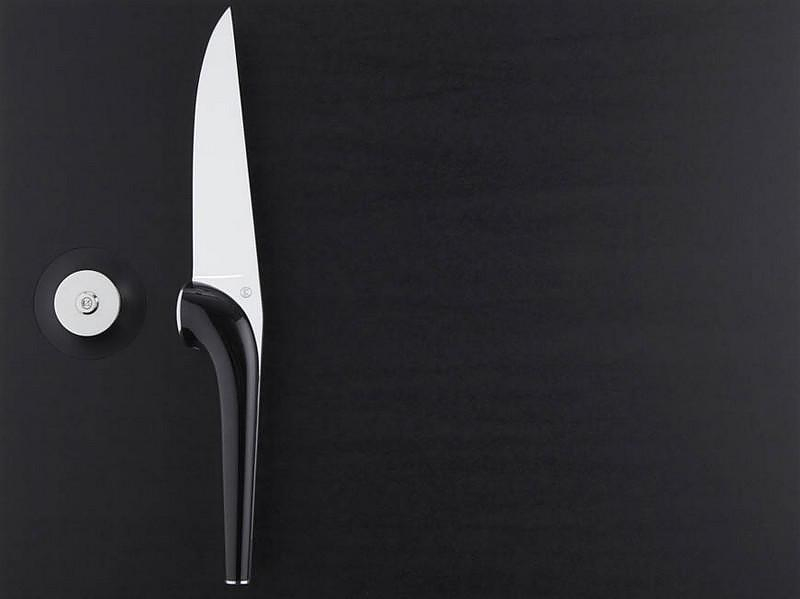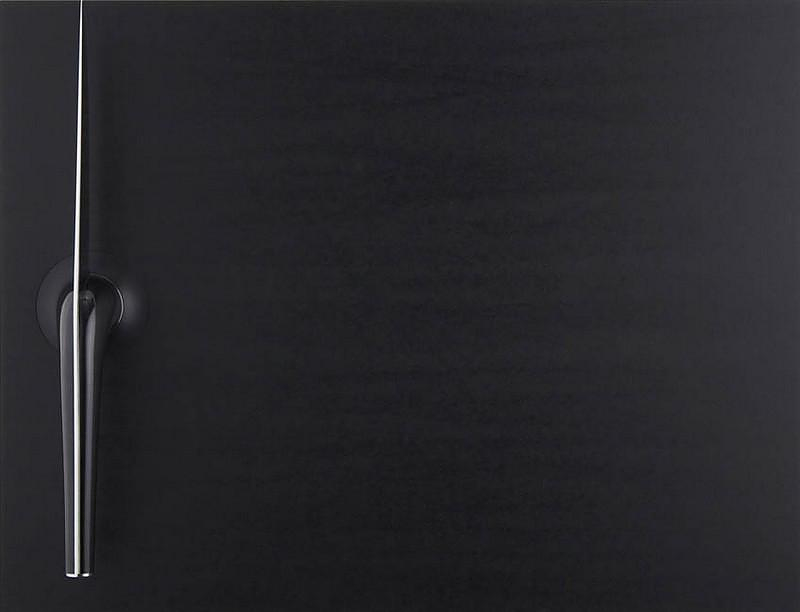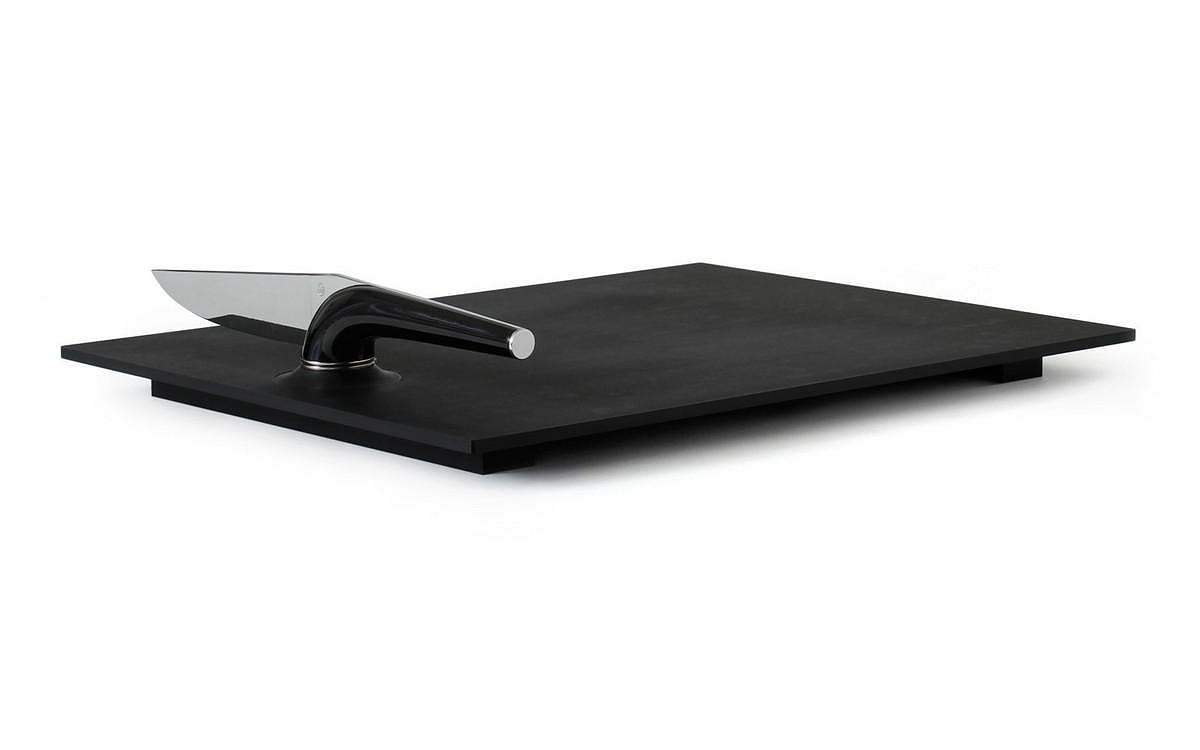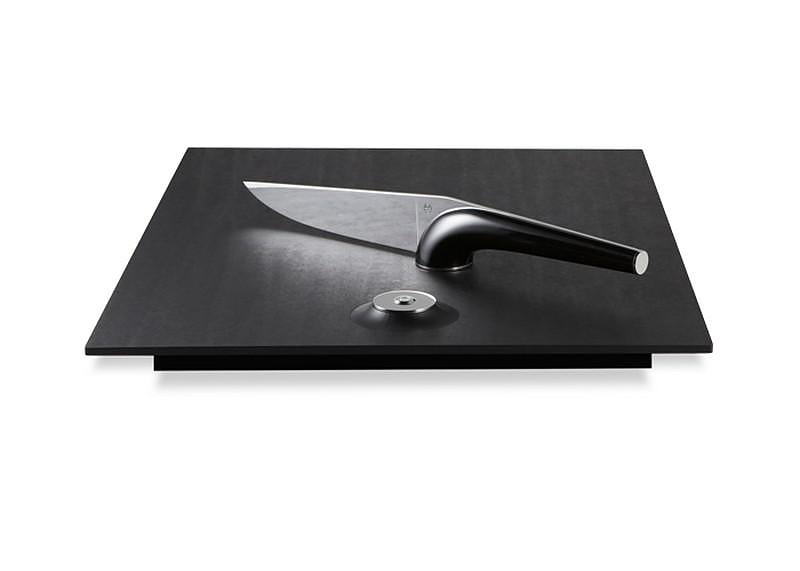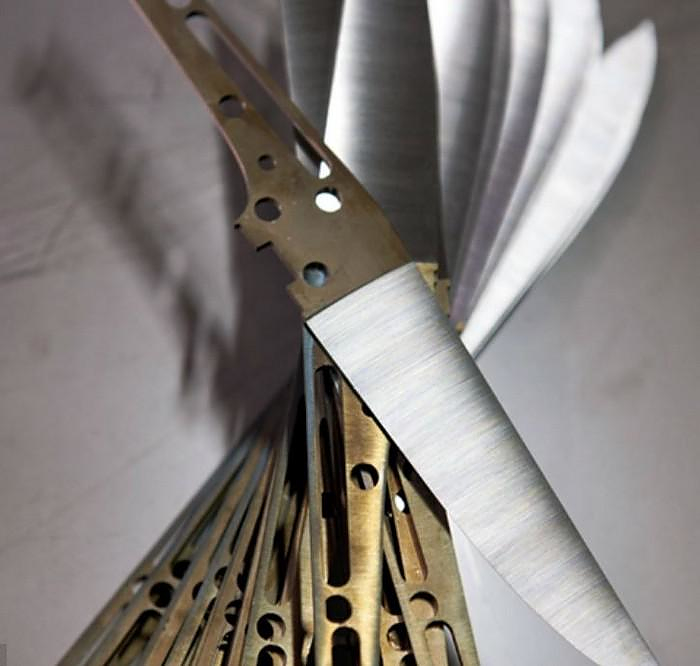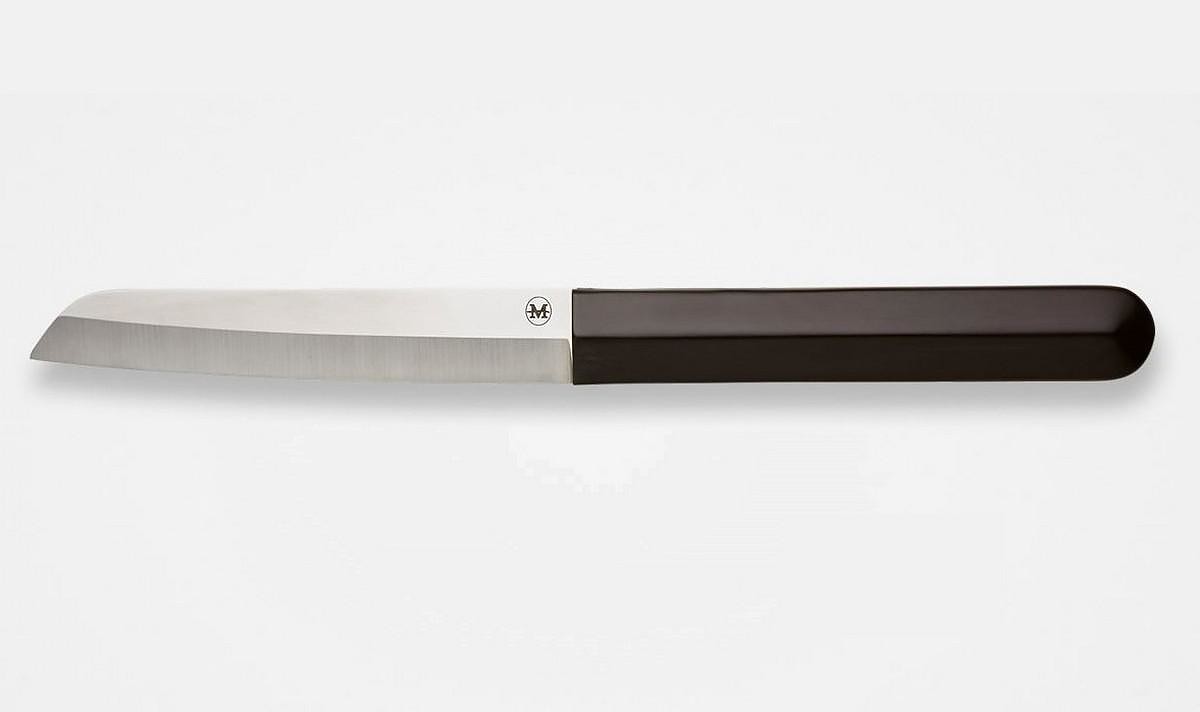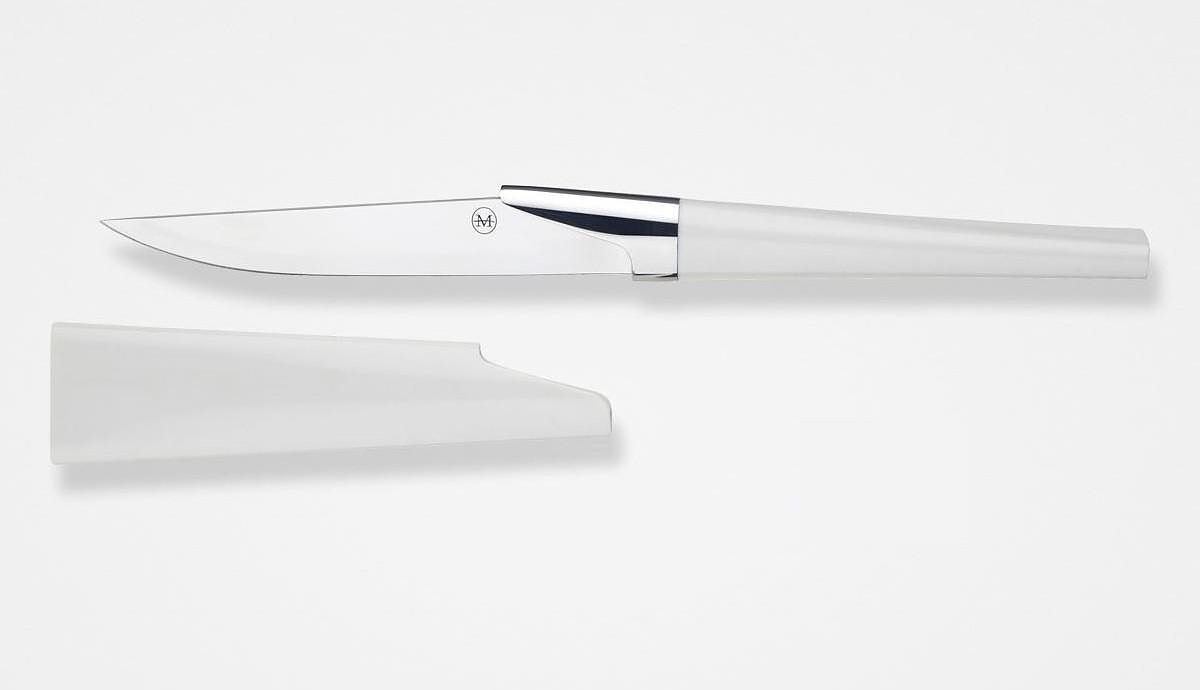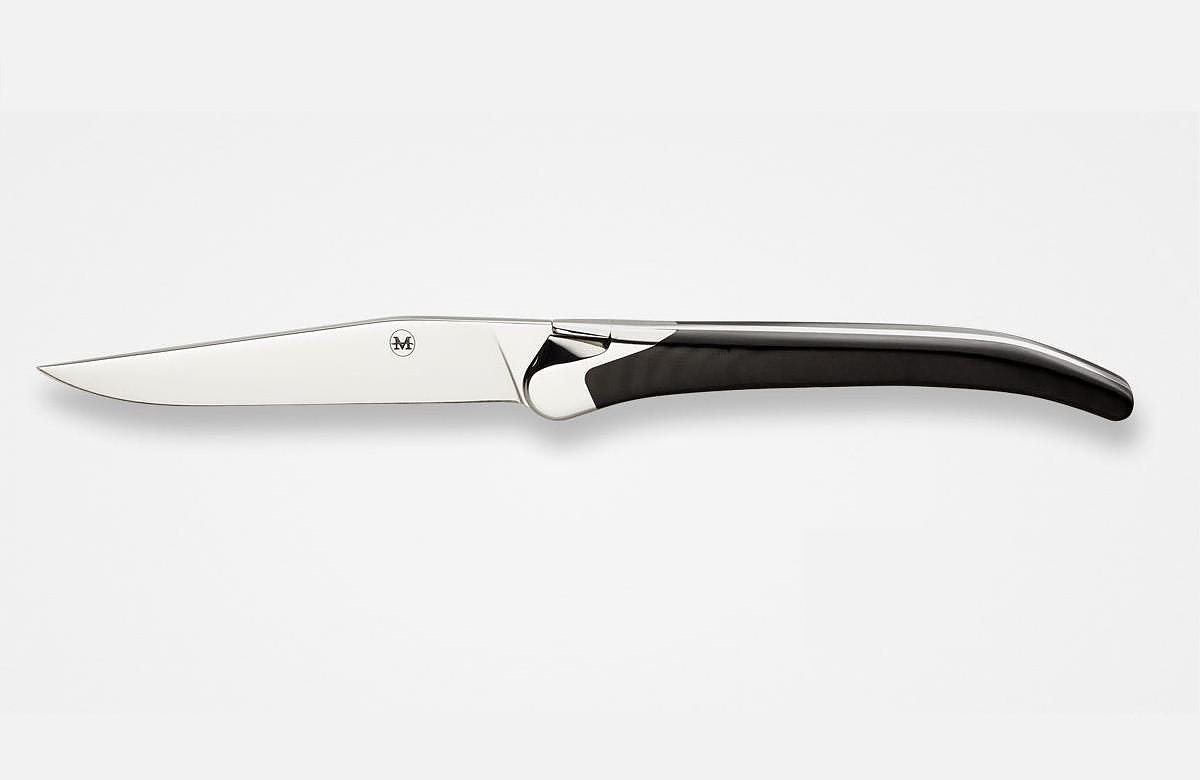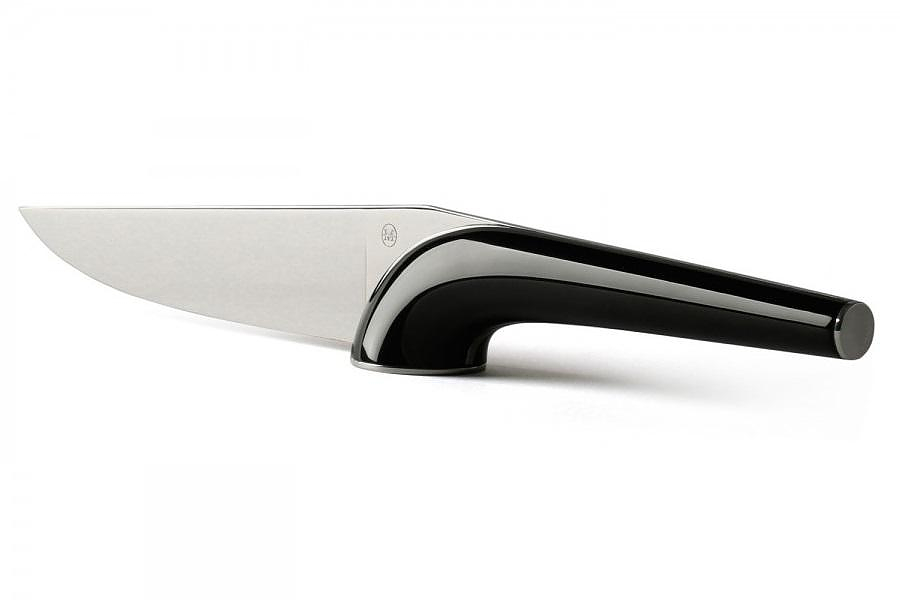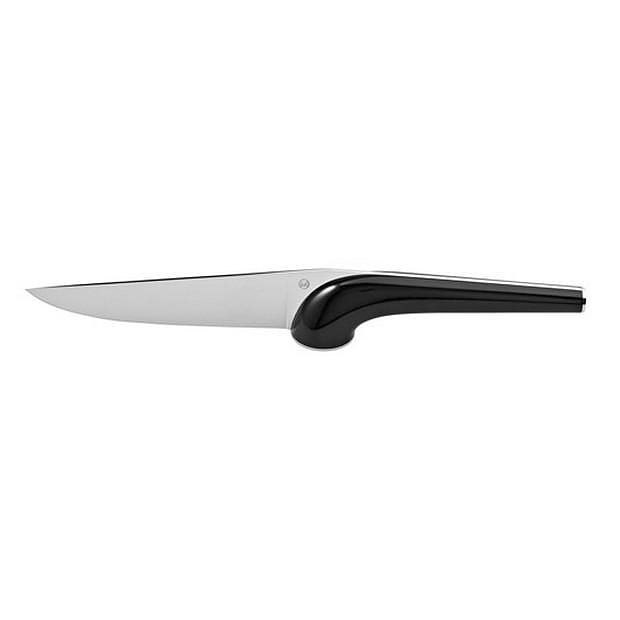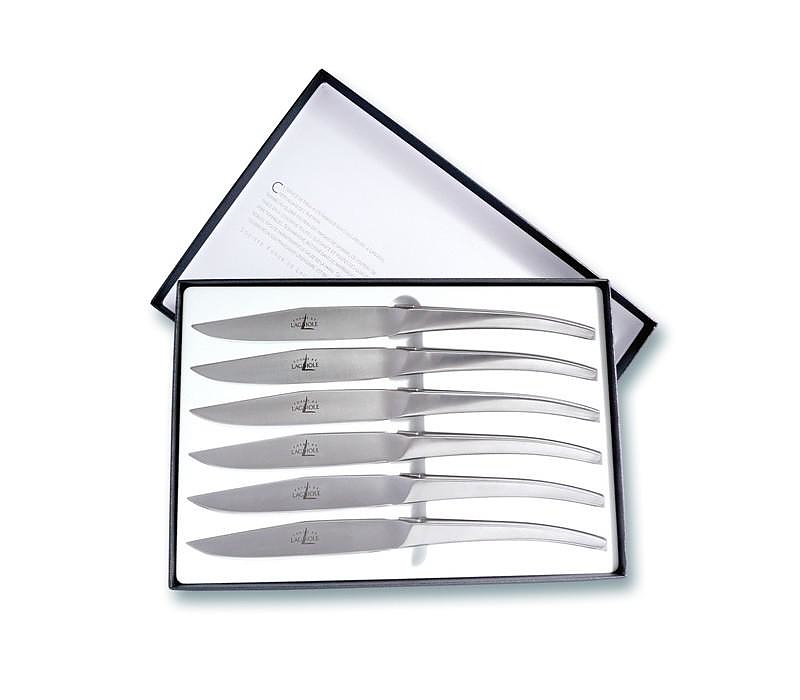Henri Mazelier showcases the art of creating fine French cutlery with a unique collection of beautiful, modern, sexy, dinner knives.
For Richard Mazelier, 2012 was a cutting-edge year it was the year that this knife maker, the fourth generation of cutlers in his family, launched the first Henri Mazelier knife collection. One year later the Mazelier Collection is still stunning and looks like it is going to be a design classic. All the knives in this premium collection were created by designer Cédric Ragot and are produced exclusively in Thiers. The pocketknife gets transformed into a dinner knife, and small katana-inspired blades find their way to the dinner table. Cédric Ragot has created original designs that stand out from the crowd. “Simple yet beautiful, ancestral yet modern, it emanates an air of genuine grandeur,” Ragot comments.
It is also notable that in order to introduce his new collections of sexy French cutlery, Henri Mazelier is employing a series of still life photographs tapping into the trend of paper art, which also seamlessly ties back to the precision and versatility of the cut of the knives.
Naturally, Henri Mazelier‘s debut knife collection includes a clasp model in its repertoire: Le Fermant de Table, a veritable oxymoron of the genre, with a design that cuts to the heart of the function by smoothing and softening the form. For this pocketknife transplanted to the dinner table Cédric Ragot draws inspiration from the traditional Aveyron knife of southwestern France.
Then there are the two cheese knives. Le Petit Couteau a Fromage (small cheese knife) and Le Grand Couteau Fromage (large Cheese knife). These impressive designs embody what Ragot calls a “spare, pared-down Aveyron style distilled to the essential”. The cheese knives come together with an elegant Platter also impeccably designed by Cédric Ragot. The cheese knives are weighted and equipped with a magnet, allowing the knife to be fixed to the Platter when not in use. The platter is made of PaperStone an eco-product made of recycled paper and resin, this material will not dull knives and is optimal for serving food.
Lastly, the first Henri Mazelier collection unveils an exclusive model with no predecessor in the world of tableware: the sheath-capped Le Katana, conceived to offer an original form of protection, but also right at home in the dining room, alone, in a duo, or more as desired. Especially with its sheath that serves double duty as… a knife rest! With these models as a starting point, Richard Mazelier will soon be extending the line with additional colors and materials, limited editions and special orders.
Following up on its debut collection of utility knives launched in 2012, in 2013 the French cutlery house Henri Mazelier added a series of incisive, urbane blades, also designed by Cedric Ragot, to their collection, the Haussman, the Tsuba and the Legend. With the same pared-down vision: from the pantry to the dining room, each model slices to the heart of the genre, challenging convention, reinventing practices and redefining the rituals.
About the Designer:
Cedric Ragot is a polymorphous designer as he cultivates a transversal approach to industrial design and creativity in the broadest sense. While the manifestations of his vision are many and various, all evince an abiding interest in forward thinking and a clear, unequivocal reading of the object. Ragot is active in many sectors, working with well-known brands like Paco Rabanne Parfums, Cappellini, Rosenthal, Veuve Clicquot, Panasonic, Roche Bobois, Alcatel, Swarovski, Schott, Krups. LaCie, Azzaro and Haagen-Dazs, to name just a few.
His creations have won him a string of honors, including a Good Design Award for his Fast vase with Rosenthal in 2007, a Wallpaper’ Design Award for his Majordome pedestal tables with Roche Bobois in 2008, and two Red Dot Design Awards, for the LaCie Flat Cables in 2009 and the Krups 3Mix 5000 Mixer, an emblematic product for the brand, in 2012.
In addition, certain of his pieces have been selected by the Fonds National d‘Art Contemporain (French national contemporary art endowment) and are on view in Paris, Hanover, Vienna, New York and Milan.

